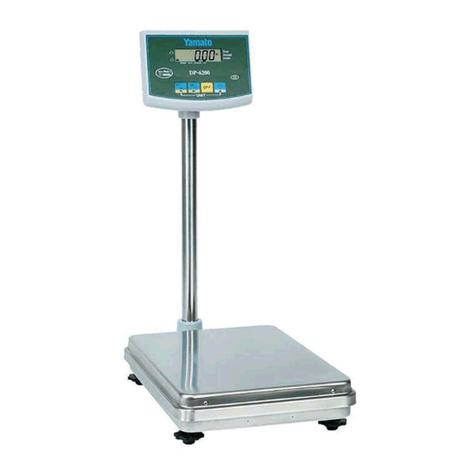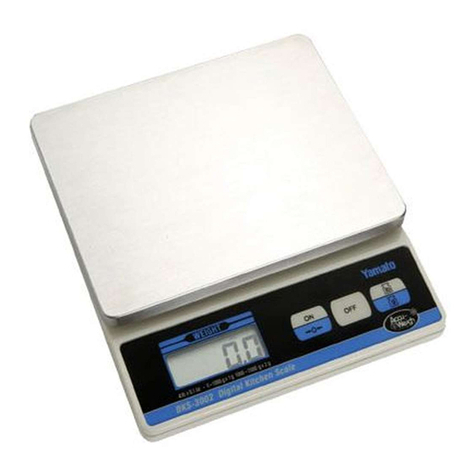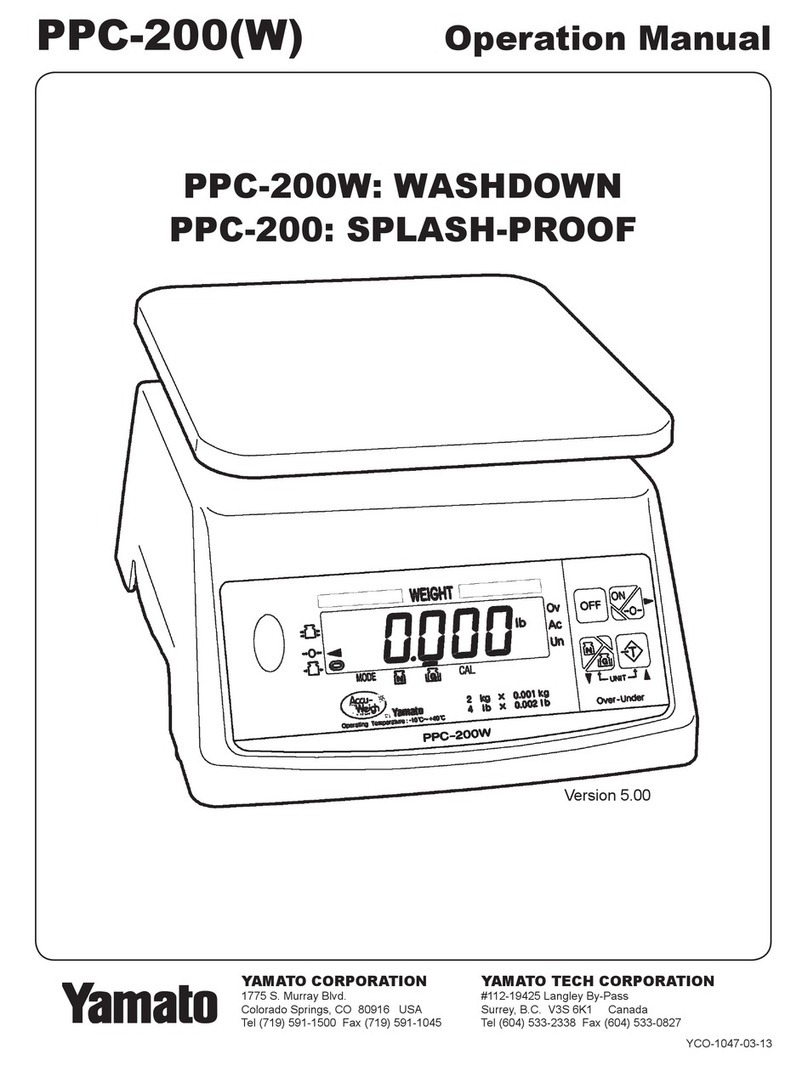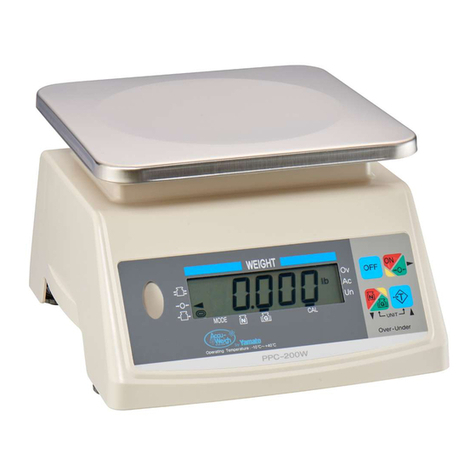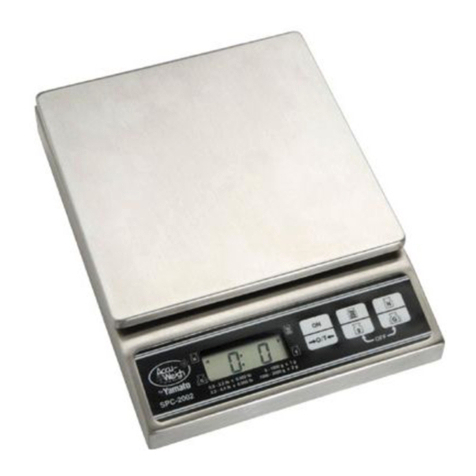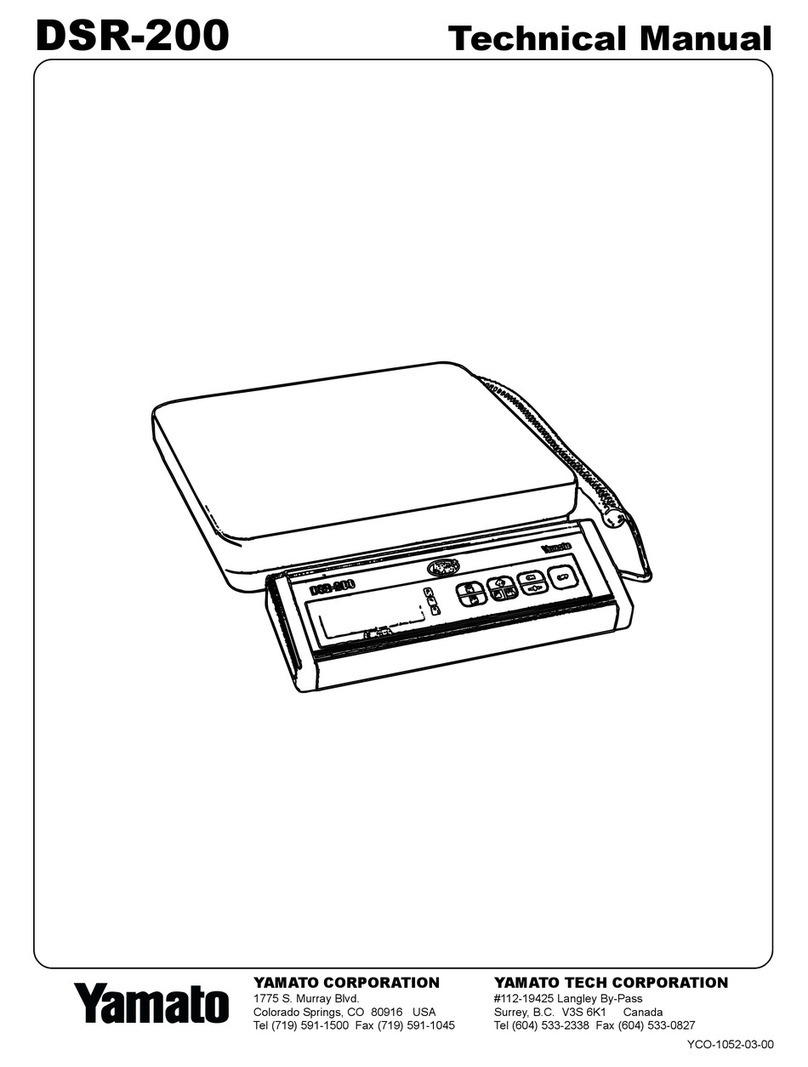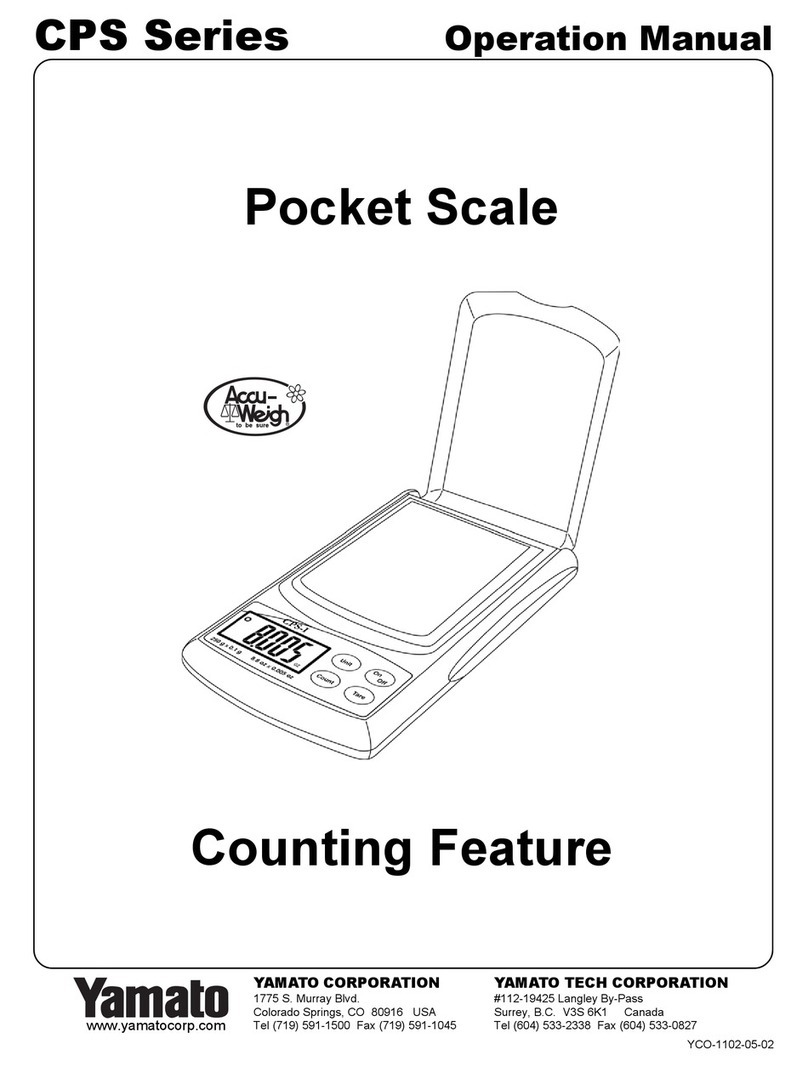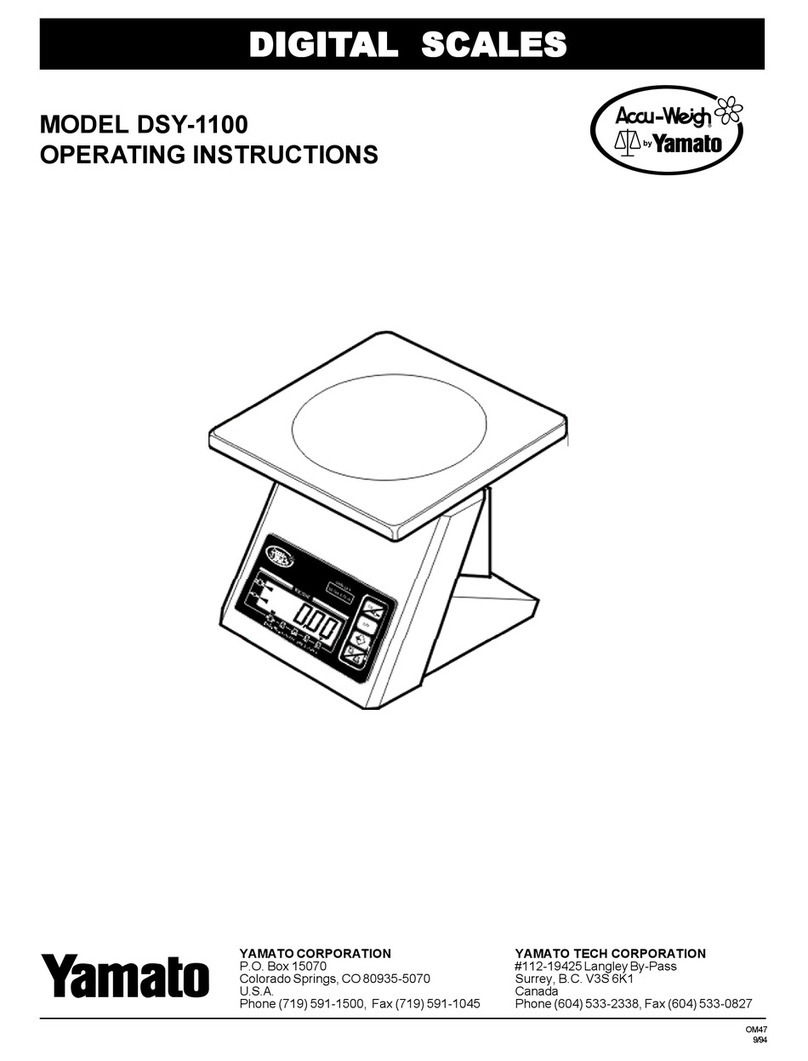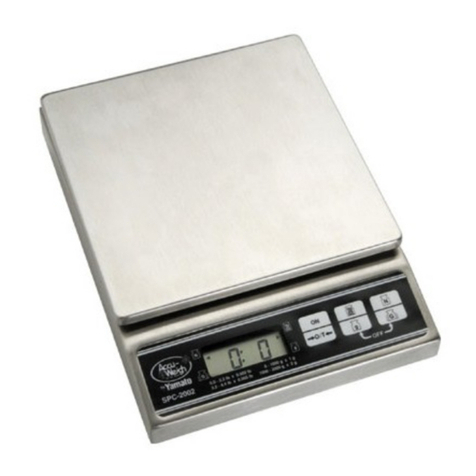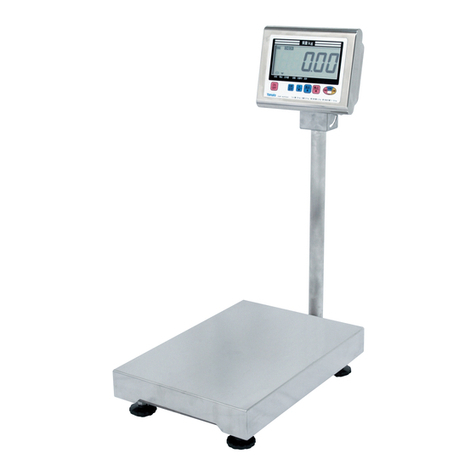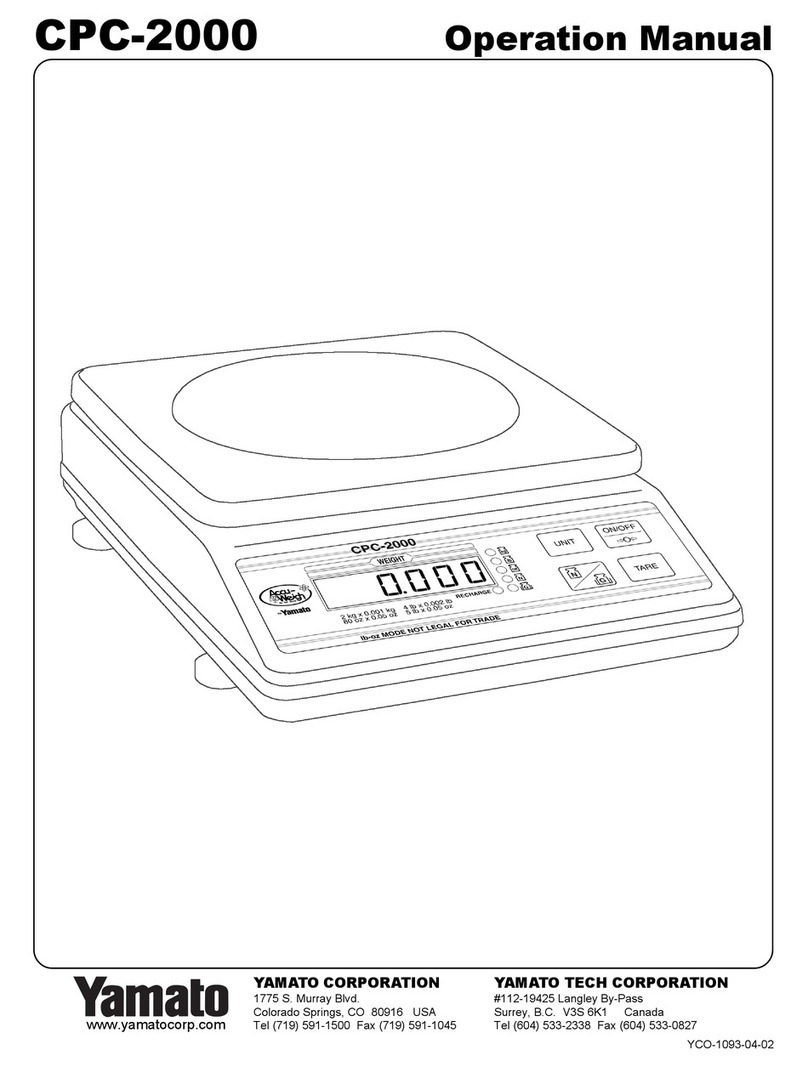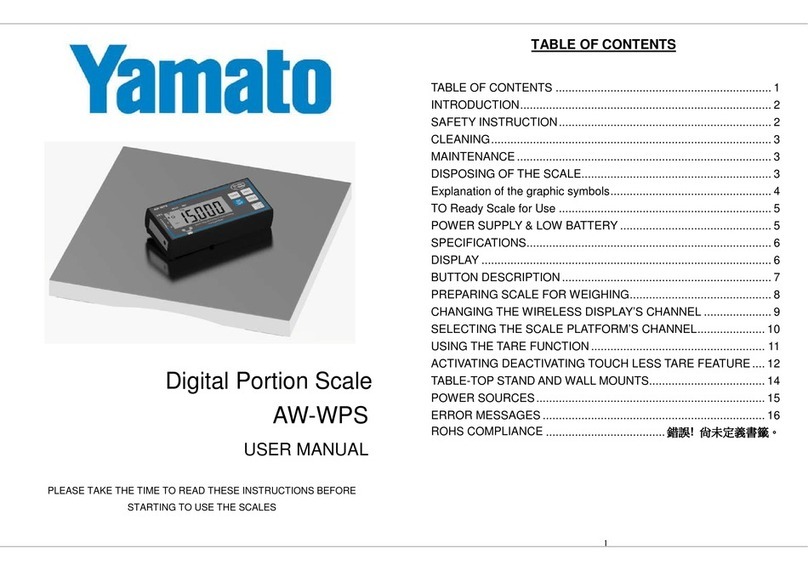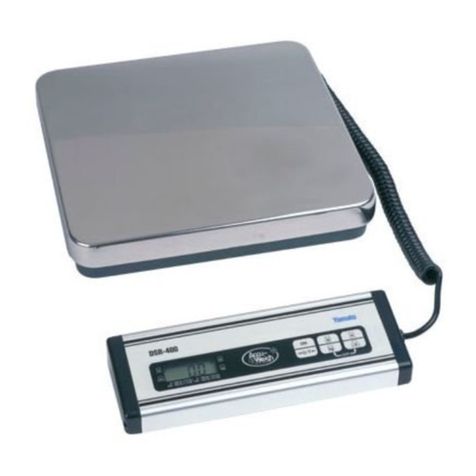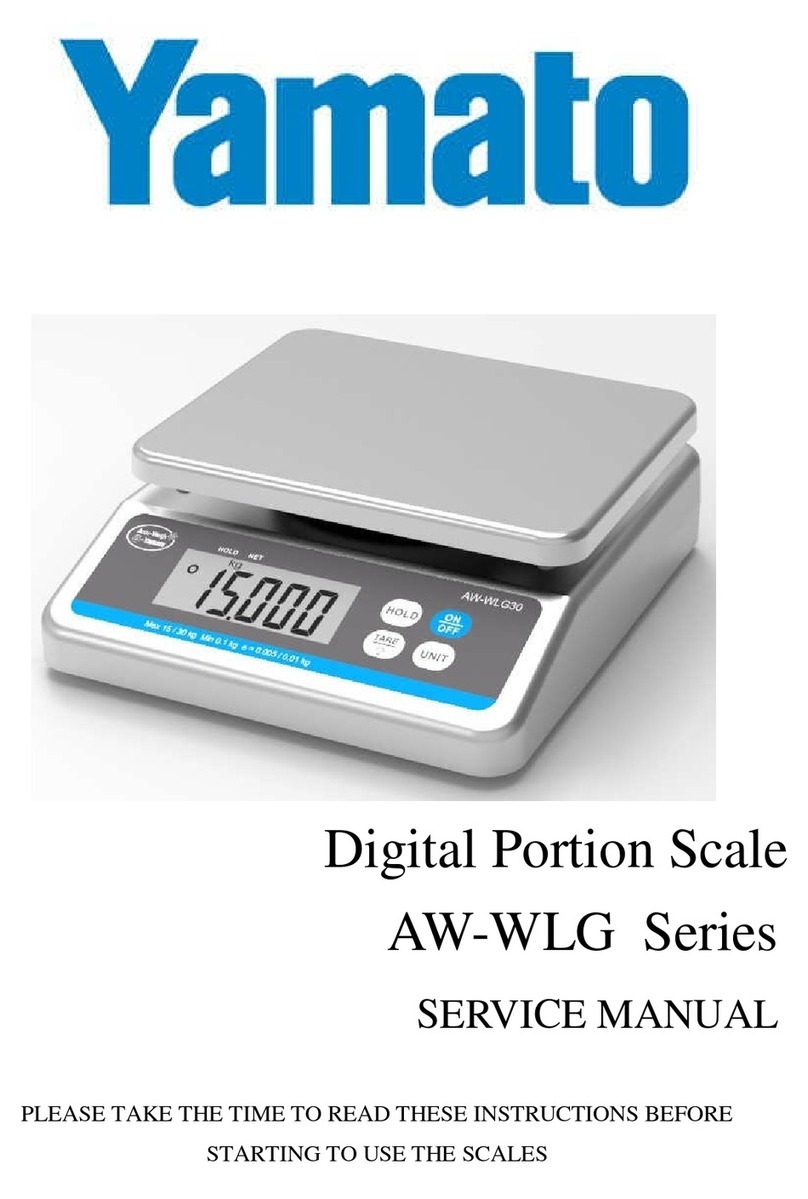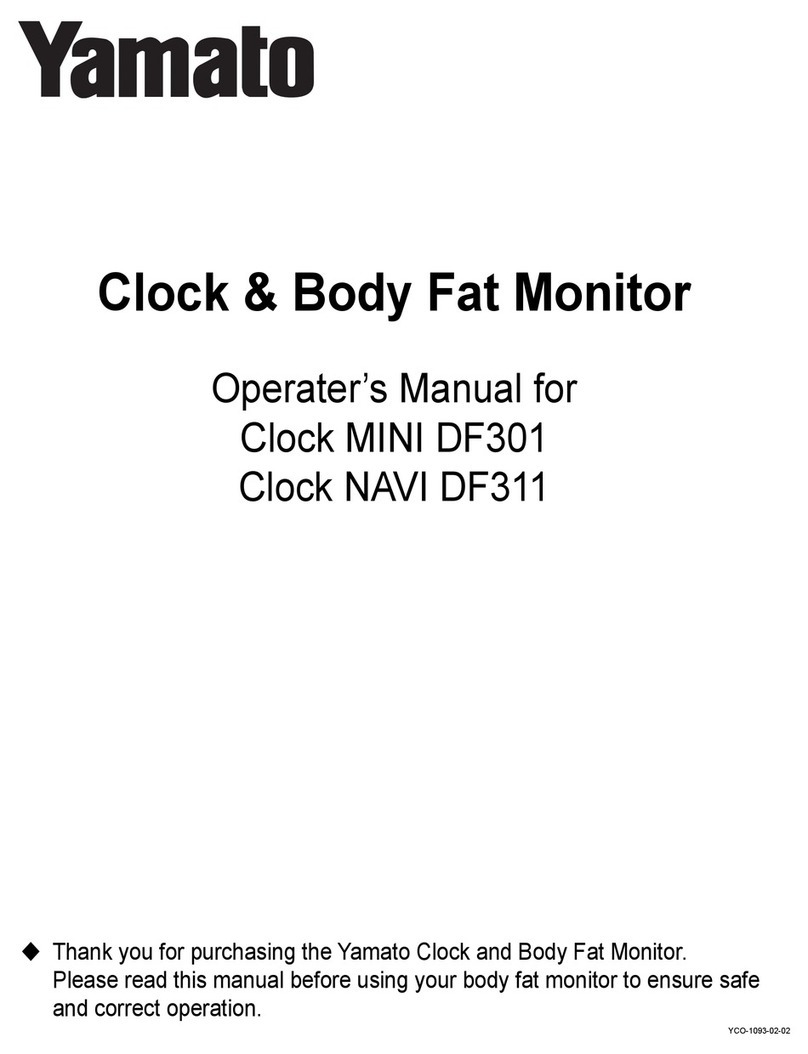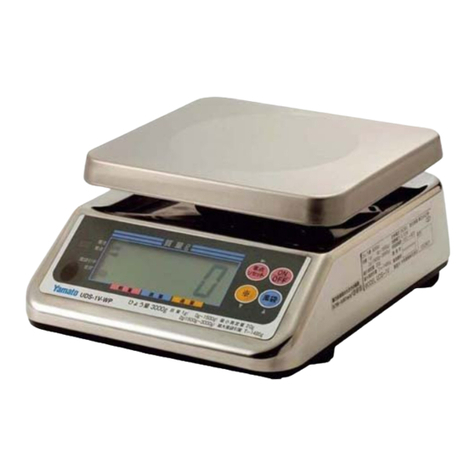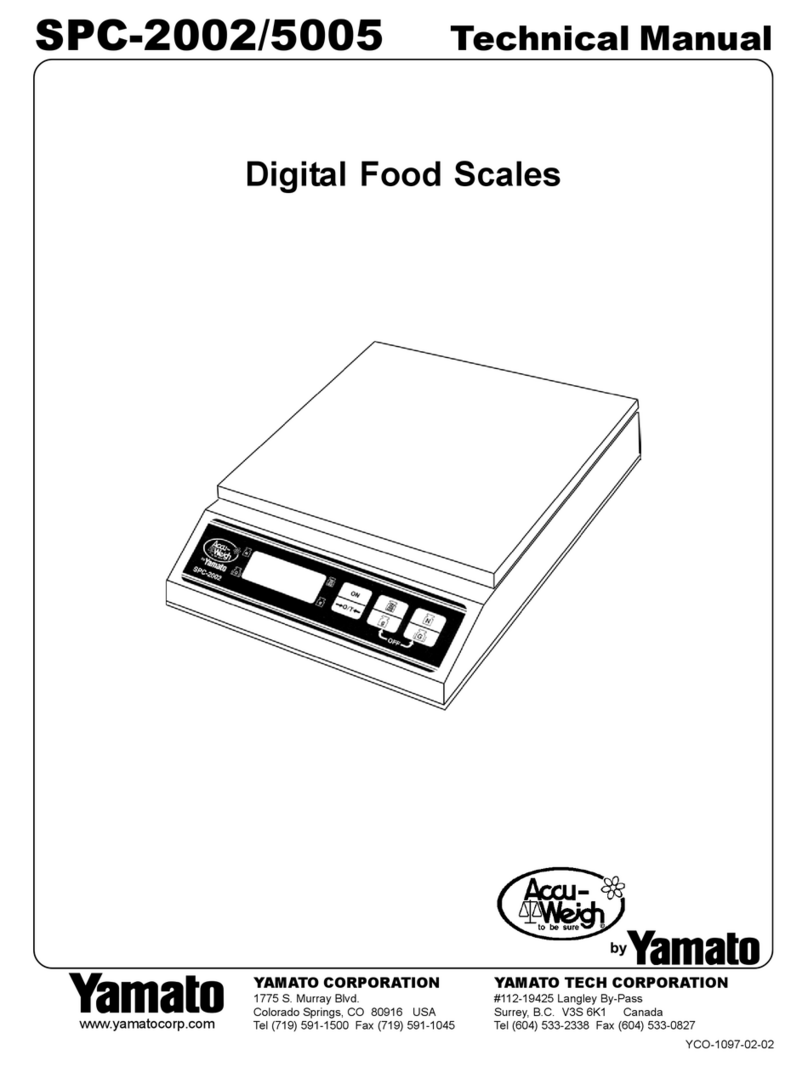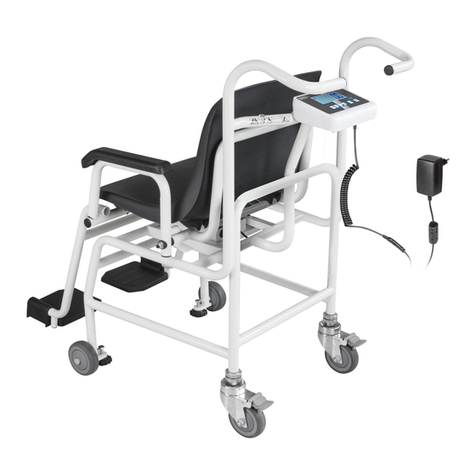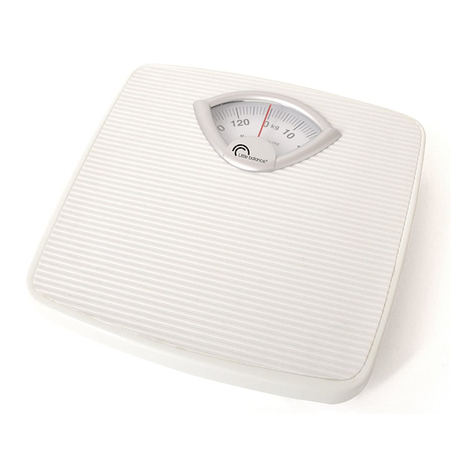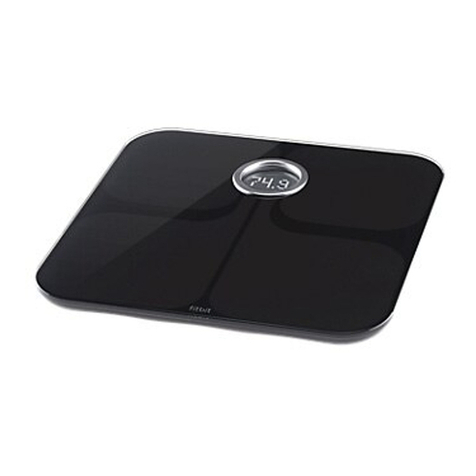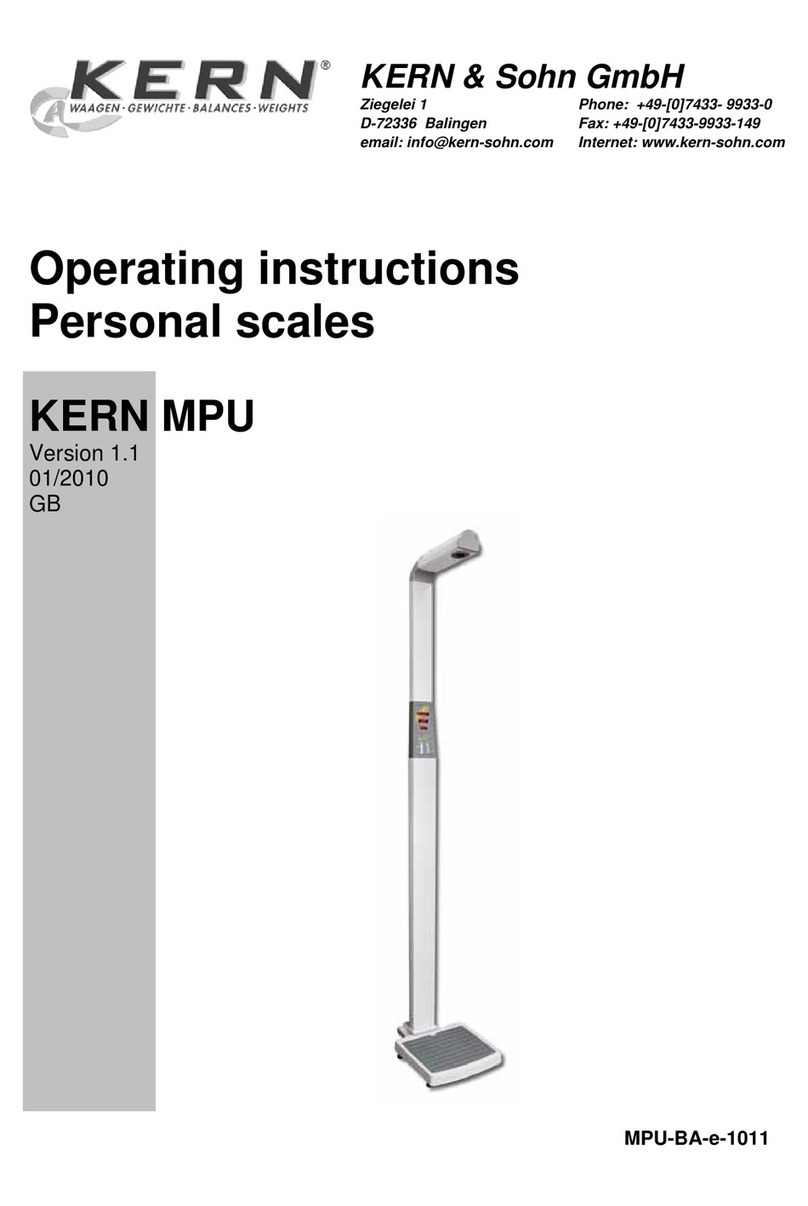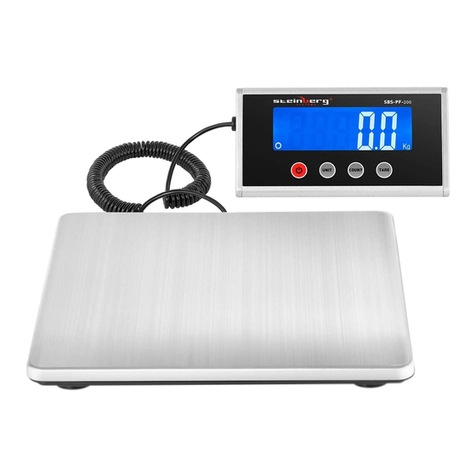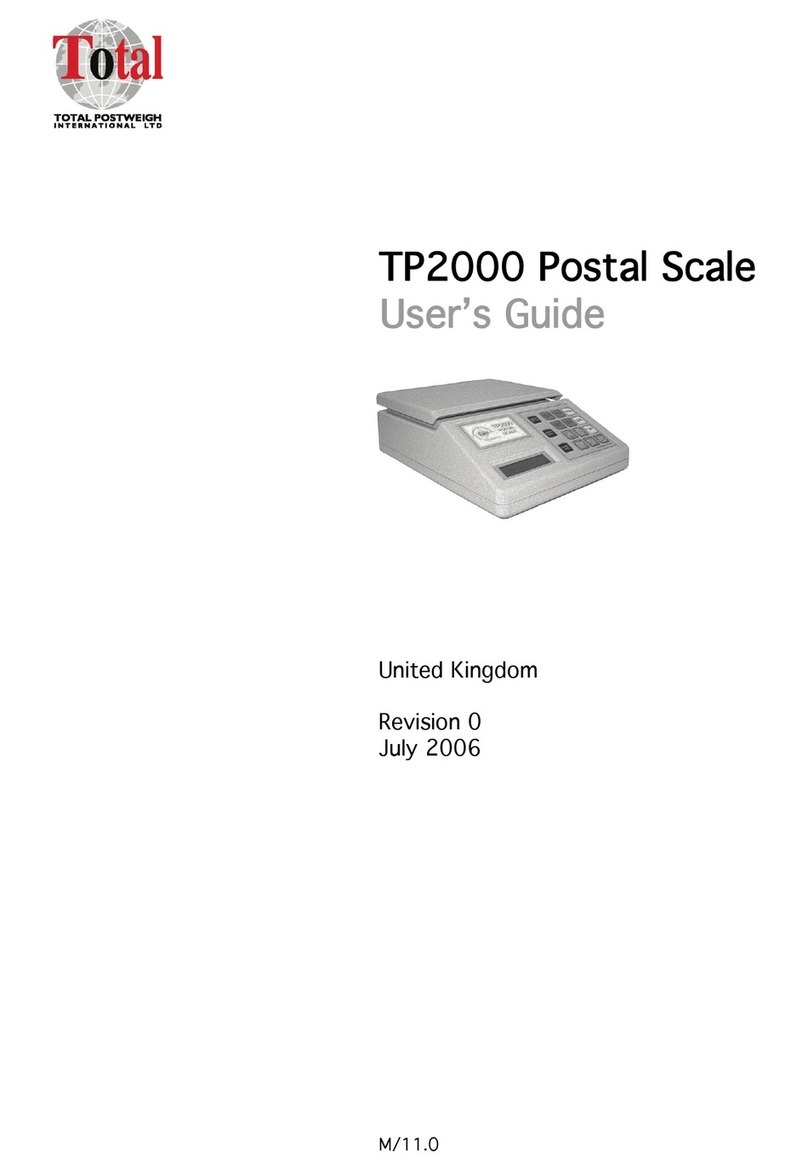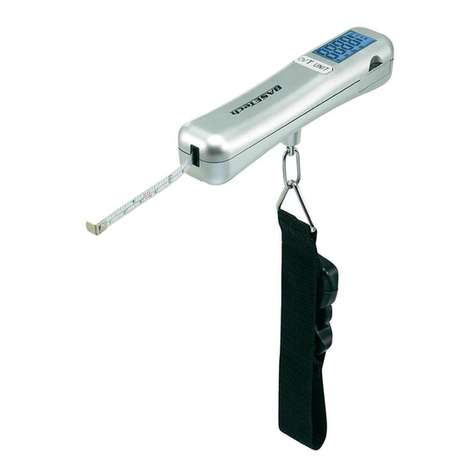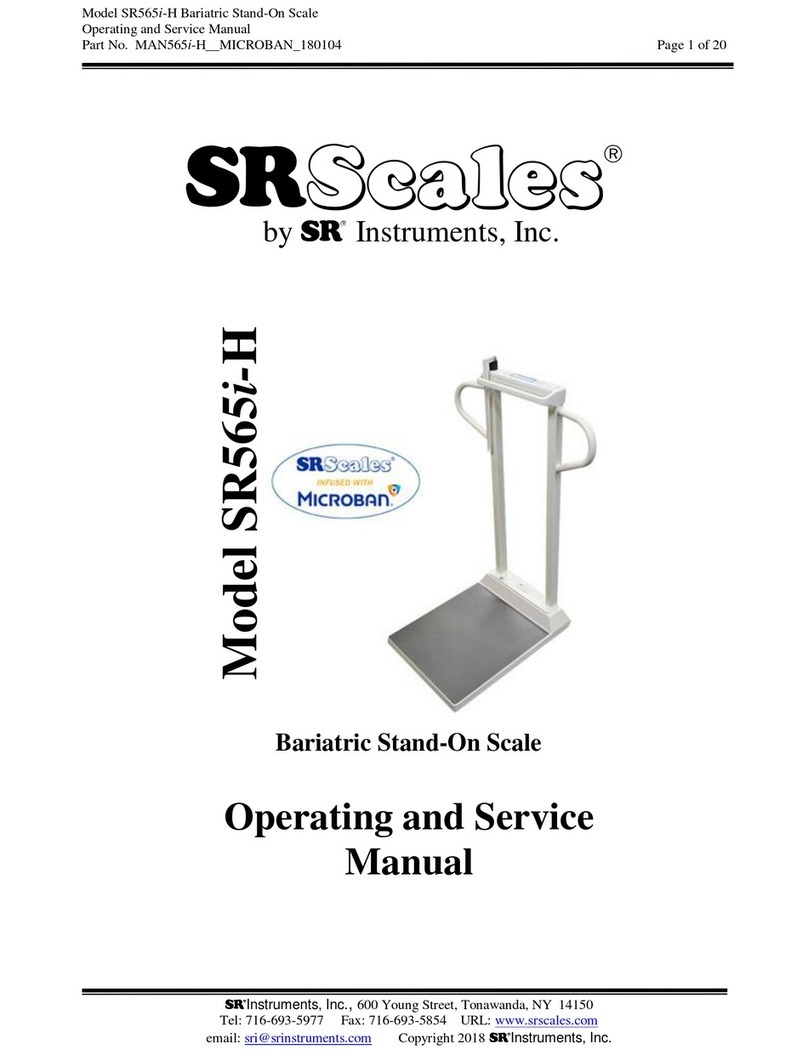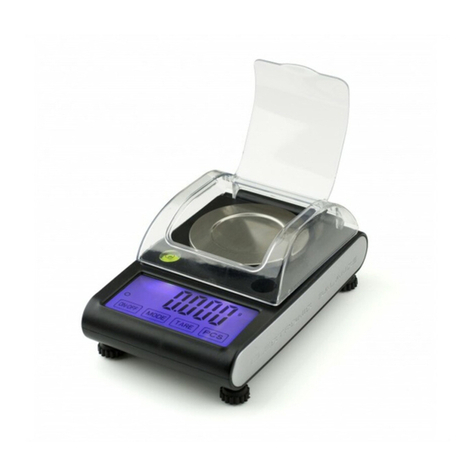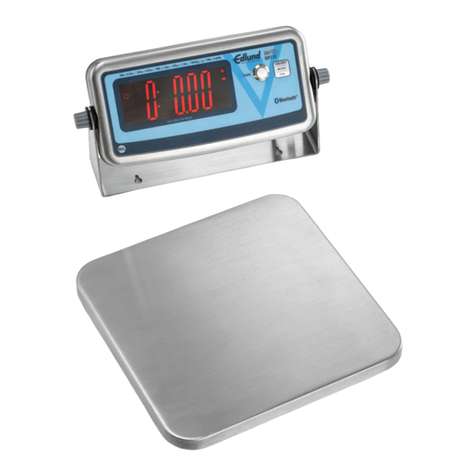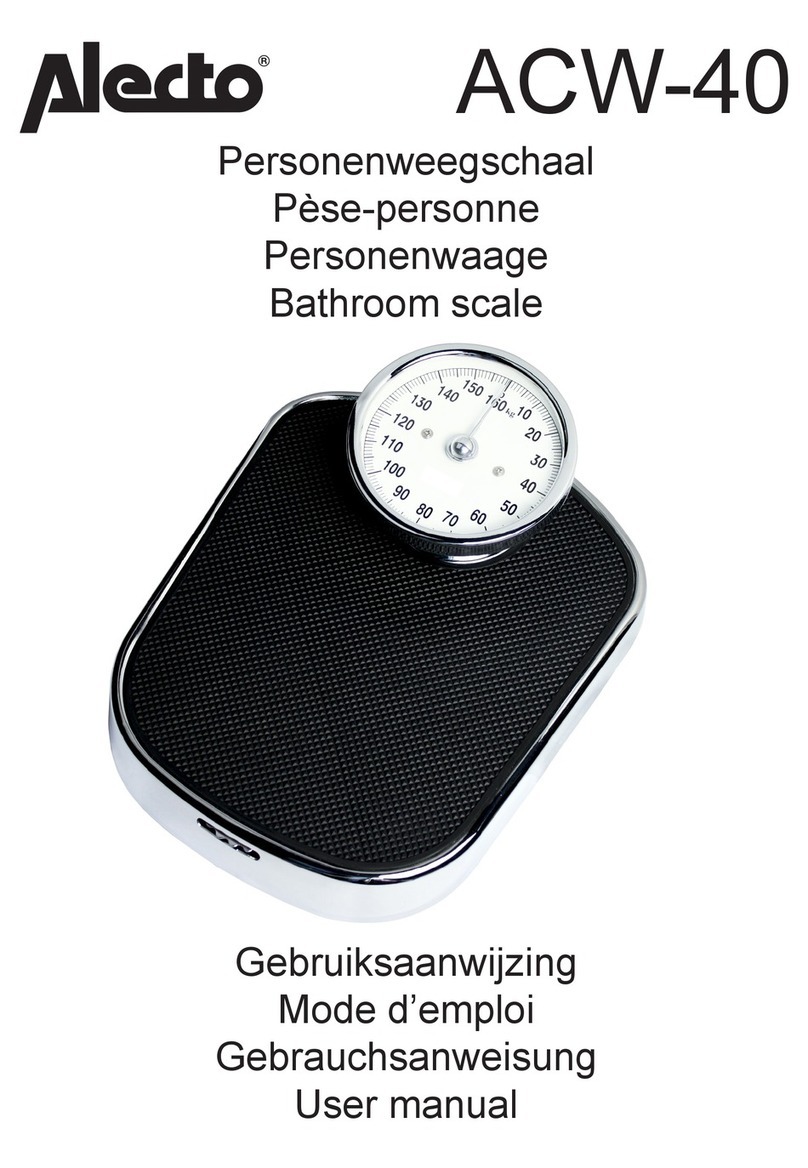
Chapter 1 Read these instructions before use
7
1-3. Functions
A waterproof digital portable platform scale, Just NAVITM has the following functions. Make use of these
functions according to your work.
Question/Answer Details of Function
Q1. To display the weight of an item or a
container as zero on the panel
Ans. One-touch tare function [Section 3-4] You can subtract tare by simply pressing Tare key.
Q2. To enter a value as tare
Ans. Preset tare function [Section 5-1] You can enter a value in the preset tare setting with the
numeric keypad.
Q3. To automatically subtract tare when placing a
container
Ans. Automatic tare function [Section 5-2]
You can automatically subtract the weight of the first
items (container) placed on the unit after the zero-point
is confirmed.
Q4. To automatically turn off the power of the
instrument (when dry batteries are used)
Ans. Automatic power OFF function
[Section 5-3]
You can automatically turn off the power of the
instrument when it is not used for a specified period.
Q5. To improve the yield rate and efficiency in
weight measurement work
Ans. Multi-function [Section 5-4]
You can select useful functions depending on the type
of the items and the packing work.
Q6. To check whether the items fall into the
range of the target weight
Ans. Checkweighing function [Section
6-1]
You can evaluate the weight using the upper and lower
limits. You can tell in an instant whether the current
weight is too low, allowable, or too high relative to the
target weight.
Support function 1) Just weight function … The
function shows how many more grams are needed.
Support function 2) Just quantity function … The
function shows how many more items are needed.
Q7. To improve the yield rate of packing work
Ans. Fixed weighing function [Section
6-2]
Because the function shows an excessive or
insufficient weight, it helps to improve the ratio of
conforming packs.
* This function cannot be used for transactions or
certifications stipulated by the Measurement Act.
Q8. Select items using their weight.
Ans. Ranking function [Section 6-3]
Items are ranked based on the weight.
* This function cannot be used for transactions or
certifications stipulated by the Measurement Act.
Q9. To make packing work easier and
improve the yield rate.
Ans. Ranking combination function
[Section 6-4]
By combining the results of the ranking function, the
function can easily pack a fixed weight of items without
the need for repacking.
Q10. To obtain the quantity of items in an
instant
Ans. Counting function [Section 6-5]
The function calculates the quantity of items from the
total weight. You can register the upper and lower limits
of the quantity as well.
* This function cannot be used for transactions or
certifications stipulated by the Measurement Act.
Q11. To use the Checkweighing function and
ranking function for the item(s) removed from the
instrument
Ans. Subtractive weighing function
[Section 5-5]
You can use the Checkweighing function, ranking
function, and the ranking mode of the rank combination
function to evaluate items removed from the
instrument.
* This function cannot be used for transactions or
certifications stipulated by the Measurement Act.

